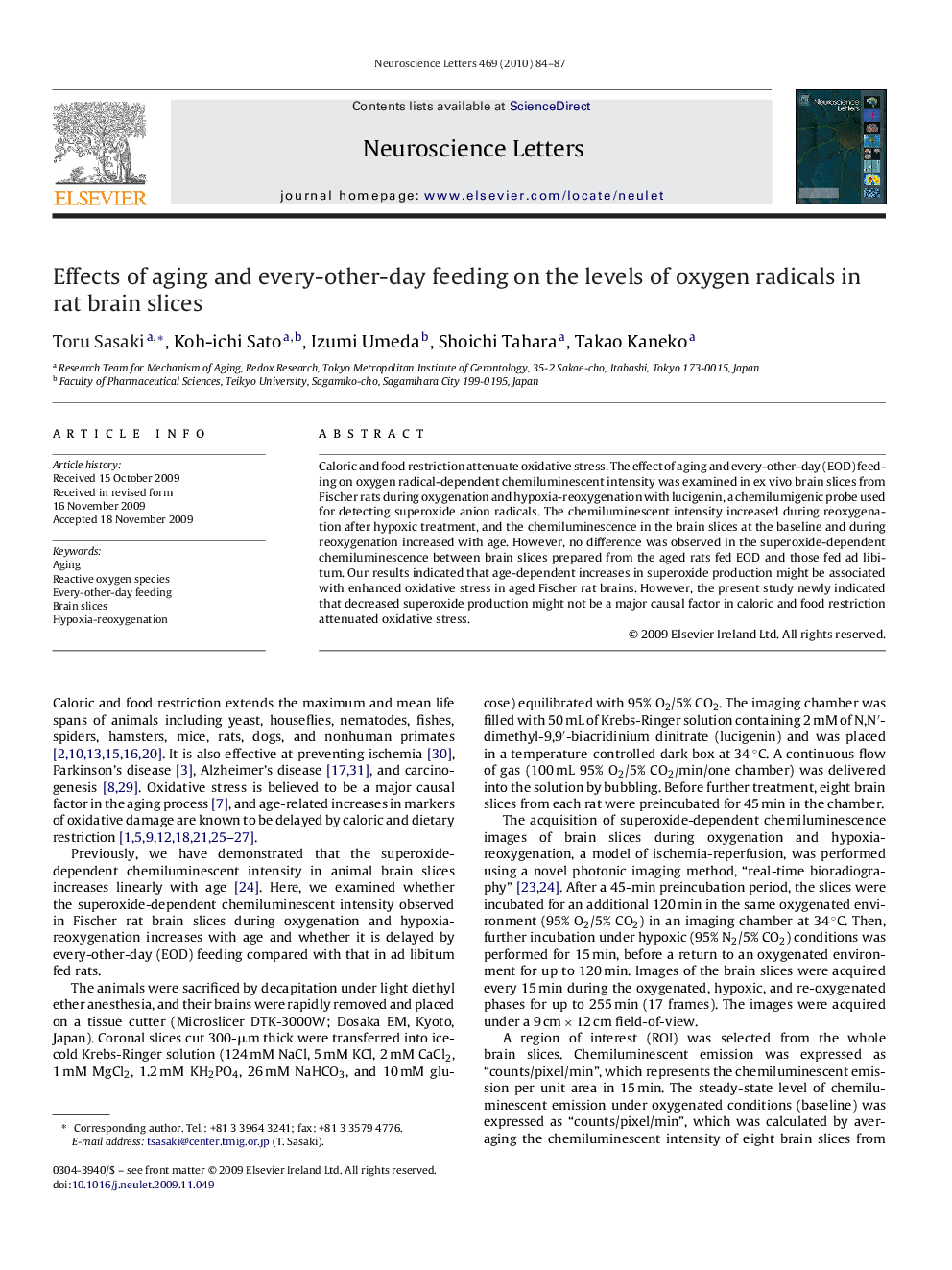| Article ID | Journal | Published Year | Pages | File Type |
|---|---|---|---|---|
| 6285366 | Neuroscience Letters | 2010 | 4 Pages |
Abstract
Caloric and food restriction attenuate oxidative stress. The effect of aging and every-other-day (EOD) feeding on oxygen radical-dependent chemiluminescent intensity was examined in ex vivo brain slices from Fischer rats during oxygenation and hypoxia-reoxygenation with lucigenin, a chemilumigenic probe used for detecting superoxide anion radicals. The chemiluminescent intensity increased during reoxygenation after hypoxic treatment, and the chemiluminescence in the brain slices at the baseline and during reoxygenation increased with age. However, no difference was observed in the superoxide-dependent chemiluminescence between brain slices prepared from the aged rats fed EOD and those fed ad libitum. Our results indicated that age-dependent increases in superoxide production might be associated with enhanced oxidative stress in aged Fischer rat brains. However, the present study newly indicated that decreased superoxide production might not be a major causal factor in caloric and food restriction attenuated oxidative stress.
Related Topics
Life Sciences
Neuroscience
Neuroscience (General)
Authors
Toru Sasaki, Koh-ichi Sato, Izumi Umeda, Shoichi Tahara, Takao Kaneko,
